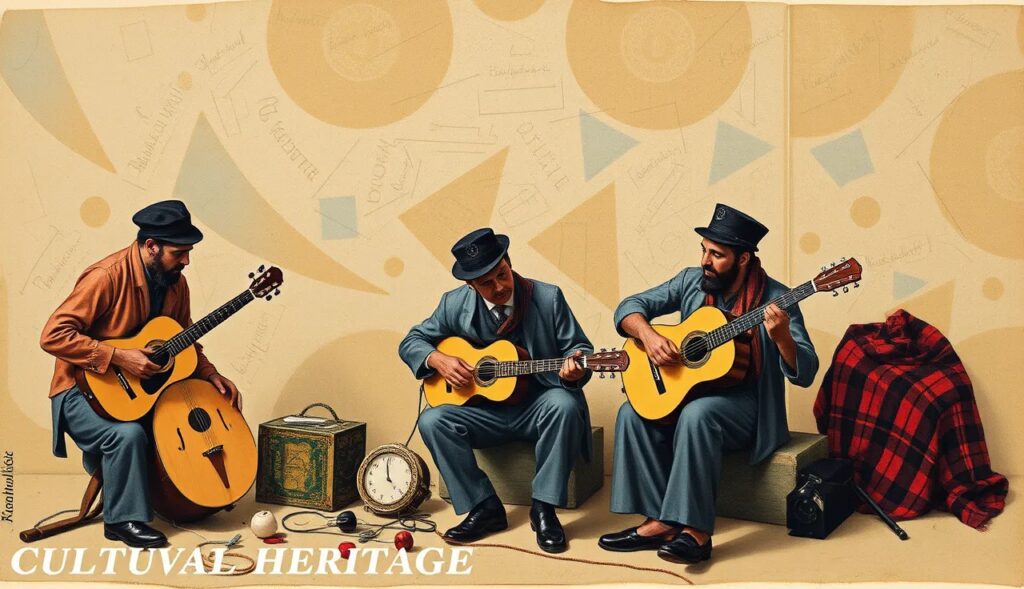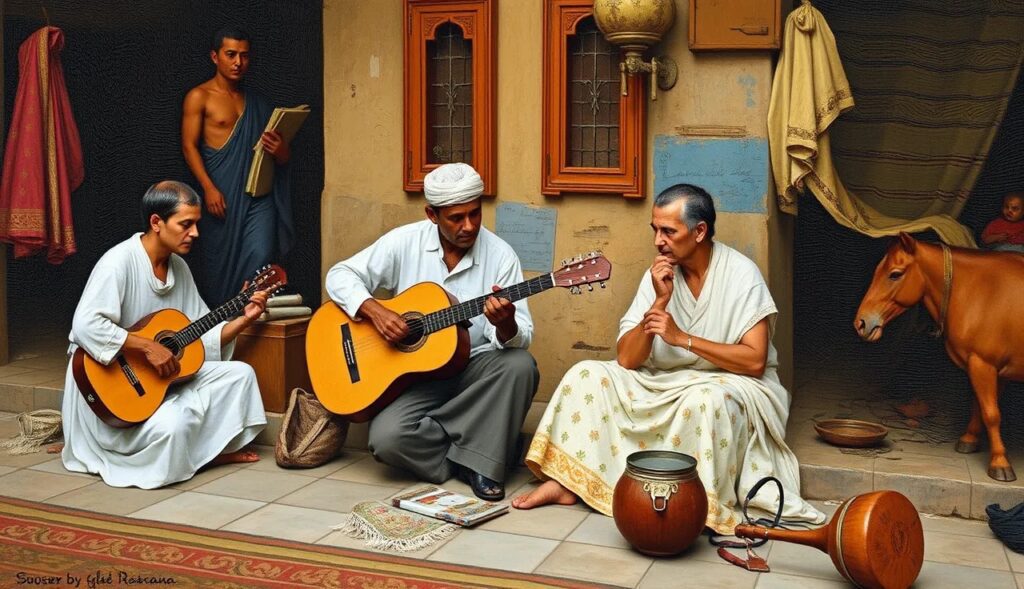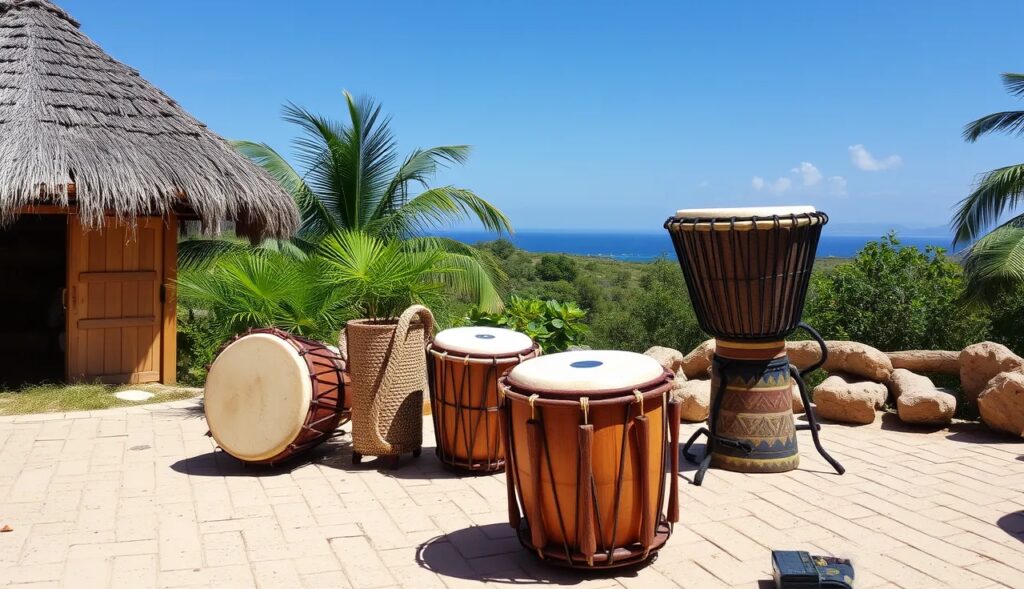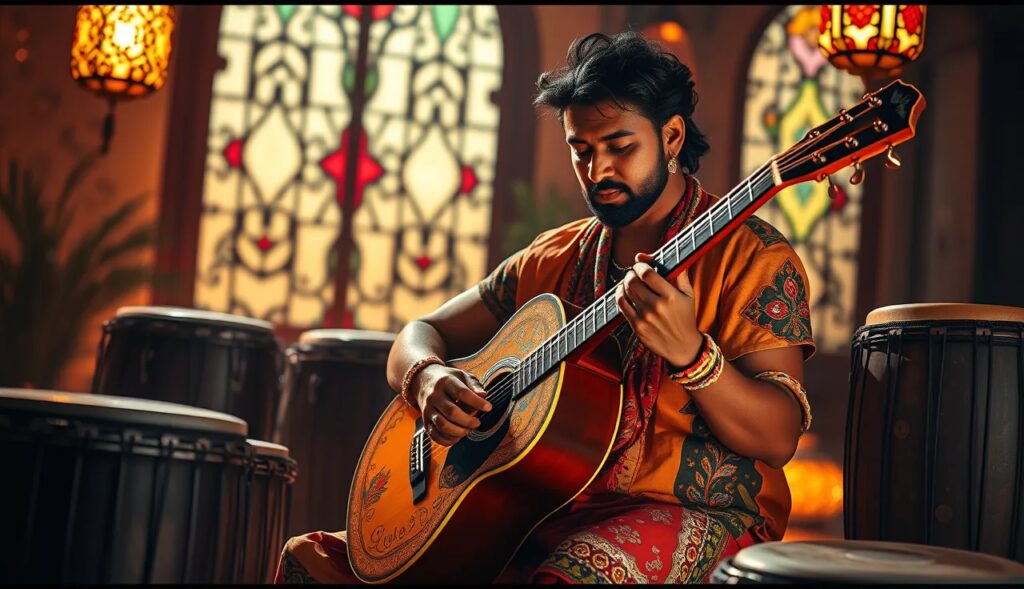
Understanding Cultural Heritage Music
What Is Cultural Heritage Music?
Cultural heritage music reflects the soul of a community, passed down through generations. Think traditional folk songs, ceremonial chants, or region-specific melodies. This music holds historical significance and often conveys stories, values, and traditions.
AI isn’t just a tool here—it becomes a partner, preserving and transforming these treasures.
The Challenges in Preserving Traditional Music
Much cultural heritage music exists in oral form, making it vulnerable to loss. Recording and archiving are vital but labor-intensive. Additionally, contextual authenticity is at stake, as improper preservation can strip the music of its cultural significance.
AI can address these gaps by digitally restoring, cataloging, and even recreating rare performances.
Why Remix Cultural Heritage Music?
Remixing heritage music connects past and present, offering fresh interpretations while honoring tradition. It introduces younger audiences to these timeless melodies, often blending them with modern genres like EDM or pop.
But there’s a fine line. Careless remixes risk cultural appropriation, so respecting the original intent and cultural context is key.
How AI Transforms Remixing
AI as a Digital Archaeologist
AI algorithms like machine learning can comb through archives, identifying patterns in musical structures. These tools help unearth melodies or rhythms that may have been lost over time.
For example, deep learning models analyze audio to isolate traditional instruments or tune signatures, making them more accessible for remixing.
Creating New Sounds from Ancient Origins
AI doesn’t just mimic; it innovates. Tools like OpenAI’s MuseNet and Google Magenta can generate new music by combining modern beats with ancient tunes. Imagine a medieval lute paired seamlessly with a synthesized bassline!
Such creative output respects tradition while opening doors to global fusion music.
AI-Enhanced Collaboration Across Cultures
AI bridges cultures by enabling remote collaboration. Musicians across continents can remix a folk melody in real time, guided by AI tools that suggest harmonies, arrangements, or rhythm enhancements.
Platforms like Amper Music and AIVA amplify this synergy, ensuring authenticity while pushing creative boundaries.

Ethical Considerations in AI Remixes
Cultural Sensitivity Matters
When remixing heritage music, consent and cultural awareness are crucial. Engaging with community elders or cultural custodians ensures AI-generated remixes align with traditional values.
Combating Cultural Appropriation
AI-powered remixes run the risk of being exploited commercially without proper credit to the original culture. Open-source projects and fair licensing models, like Creative Commons, help prevent misuse.
By establishing transparent practices, creators can ensure profits benefit the originating communities.
Examples of AI-Driven Heritage Music Projects
Restoring Lost Languages Through Music
AI has been instrumental in reviving endangered languages by analyzing song lyrics and reconstructing melodies. Projects like Endangered Language AI (ELAI) focus on translating cultural heritage music into modern formats.

Remixing Traditional African Drums
A case in point is using AI to reinterpret West African djembe rhythms. These remixes combine tribal drumming with electronic music, creating a bridge between heritage and contemporary sounds.
The Technology Behind AI Remixing
Machine Learning in Musical Analysis
Machine learning enables AI to break down complex compositions into core elements like tempo, rhythm, and melody. This analysis is crucial when dealing with cultural music that may lack formal notations.
For example, spectral analysis allows AI to detect and replicate unique tonalities of traditional instruments, like a sitar’s intricate pitch shifts or the deep resonance of a didgeridoo.
Neural Networks Generating Music
Generative AI, such as recurrent neural networks (RNNs), is reshaping remixing. These models learn patterns from traditional music datasets to compose new pieces with familiar motifs.
Think of it as AI learning the “accent” of a culture’s music, ensuring the new creations resonate authentically.
Tools and Platforms Driving Innovation
AI platforms like Amper Music and Jukedeck simplify remixing by generating beats or layers based on user input. Meanwhile, custom-built tools like Folk-RNN specialize in cultural music, blending preservation with innovation.
The Rise of AI-Created Global Fusion
Blending Genres Without Losing Identity
AI excels at combining vastly different styles without overwhelming the essence of the original. For instance, an AI can integrate the soft strings of Japanese koto with the pulsating rhythm of techno.
The result? A genre-defying masterpiece that still feels rooted in its heritage.
AI and Live Performance
Live performances are evolving, with AI improvising alongside musicians. Picture a tabla player harmonizing in real time with an AI synthesizer, creating something uniquely traditional yet futuristic.
Such innovations encourage global appreciation of cultural music by reimagining it for modern audiences.
AI’s Role in Education and Awareness
Learning Traditional Music Through AI
AI-driven apps are making it easier to learn traditional music. Platforms like Melodics or Skoove incorporate cultural tracks, enabling users to master rare instruments or styles through interactive tutorials.

Raising Awareness of Dying Traditions
By spotlighting endangered musical traditions, AI-generated remixes serve as ambassadors. These tracks, shared globally, amplify the reach of lesser-known cultures and inspire preservation efforts.
Take, for example, AI remixing Tuvan throat singing into lo-fi beats—introducing millions to this niche art form.
The Future of AI in Remixing Heritage Music
Customizing Music for Diverse Audiences
AI’s ability to adapt music for different audiences is a game-changer. By analyzing user preferences, AI can remix a traditional song into multiple versions—folk, jazz, or electronic—catering to varied cultural tastes.
This adaptability ensures that heritage music finds its way into playlists across the globe, building cross-cultural appreciation.
Enhancing Immersive Experiences
With the rise of virtual reality (VR) and augmented reality (AR), AI-driven remixes are becoming integral to immersive experiences. Imagine visiting a VR museum where an ancient melody dynamically transforms based on your movement or environment.
Such innovations blend education with entertainment, making cultural heritage music an interactive journey.
AI as a Tool for Cultural Diplomacy
AI-powered remixes can serve as cultural bridges in international collaborations. By blending musical elements from different heritages, these projects foster unity and celebrate global diversity.
For instance, UNESCO-backed initiatives could use AI to promote cultural harmony through music.
Potential Drawbacks and Controversies
Loss of Human Creativity
Critics argue that AI risks overshadowing human artistry. While AI generates innovative remixes, there’s concern about losing the emotional depth and personal touch of human musicians.
The key lies in balance: using AI to assist, not replace, creative expression.
Over-commercialization of Heritage
As AI simplifies remixing, there’s a risk of over-commercializing sacred music. Care must be taken to prevent heritage from being reduced to mere commodities.
Involving cultural stakeholders in the remixing process ensures respect for original traditions.
Conclusion: A Harmonious Collaboration
AI is not just a disruptor; it’s a collaborator in remixing cultural heritage music. It offers tools to preserve, innovate, and share these musical treasures with the world.
However, the responsibility to respect cultural contexts and engage with communities lies with creators. Together, humans and AI can bridge the past and future, ensuring that cultural heritage music thrives in new and meaningful ways.
Let’s keep the beat going—what aspect of AI’s musical capabilities excites you the most?
FAQs
Can AI help revive lost or endangered musical traditions?
Yes! AI has already played a vital role in reviving endangered music. For instance, AI-powered transcription tools have recreated the sounds of ancient Sumerian lyres by analyzing archaeological notations.
Similarly, projects like the Smithsonian Folkways archive employ AI to reintroduce nearly forgotten songs to the world, keeping oral traditions alive for future generations.
How do AI remixes avoid cultural appropriation?
Respecting cultural context is key. Ethical AI remixes involve consultation with cultural stakeholders, such as local musicians or historians, ensuring the remix honors the source material.
For example, when remixing Aboriginal music, some creators use AI to incorporate didgeridoo rhythms while partnering with Indigenous artists to guide authenticity and share profits equitably.
What AI tools are most popular for remixing cultural music?
Popular tools include platforms like AIVA for composing, Amper Music for generating instrumental layers, and Folk-RNN for remixing traditional folk melodies.
One notable example is Google’s Magenta, which analyzed Indian raga compositions to produce experimental remixes blending classical sitar with lo-fi beats.
How can AI remixing engage younger audiences with cultural heritage?
AI remixes bridge generational gaps by blending heritage music with modern genres. For instance, an AI remix of Native American flutes with a hip-hop beat can attract younger listeners who might not otherwise engage with traditional music.
Interactive apps and social media-friendly formats make these remixes accessible, sparking curiosity and appreciation among digital-native generations.
Is it possible to remix sacred or ceremonial music ethically?
Remixing sacred music requires utmost care. Creators must engage with cultural custodians to understand the sacredness of the piece and its permitted use.
For example, many Indigenous groups have guidelines for how ceremonial chants should be shared, if at all. AI tools like Creative Commons licensing can ensure such remixes remain within culturally respectful boundaries.
Can AI create completely original music based on cultural heritage?
Yes, AI can generate entirely new music inspired by cultural heritage. By analyzing datasets of traditional melodies, instruments, and rhythms, AI creates unique compositions that feel authentic.
For instance, AI might combine Celtic harp tunes with contemporary jazz structures, producing a fusion sound that’s rooted in tradition yet entirely novel.
How can communities ensure their cultural music is not misused by AI?
Communities can protect their music by establishing digital rights agreements and working with organizations like UNESCO or WIPO (World Intellectual Property Organization). These agreements regulate how AI accesses and uses cultural archives.
Open-source frameworks with clear permissions can also prevent exploitation while promoting responsible remixing.
What role does AI play in live performances of heritage music?
AI is revolutionizing live performances. For example, AI tools enable real-time improvisation by generating harmonies or percussive beats on stage. A traditional Indian sitarist, for instance, can perform alongside an AI that dynamically responds with tabla rhythms.
This creates a collaborative experience where technology amplifies artistry.
Can AI remixes replace traditional musicians?
Not at all. While AI enhances and complements the creative process, it cannot replicate the emotional depth, cultural insight, and human connection of traditional musicians.
Instead, AI acts as a creative ally, helping musicians explore new possibilities while preserving the essence of their craft.
AI-Powered Visualizations of Cultural Music
AI isn’t limited to sound. Tools like Google DeepDream and AIVA are now creating visual representations of music, turning soundscapes into immersive art.
For example, imagine pairing a haunting Norwegian folk ballad with visuals of auroras, generated by analyzing the music’s tone and rhythm. These audiovisual experiences make cultural music more engaging, especially for audiences unfamiliar with the tradition.
AI and Interactive Music Learning
Interactive learning apps powered by AI are revolutionizing how people engage with cultural music. Programs like Yousician now offer courses tailored to traditional instruments such as the Chinese guzheng or the Irish tin whistle.
By gamifying the process and providing real-time feedback, AI lowers the barrier for anyone to explore heritage music.
Expanding Reach Through AI-Based Localization
Localization is essential for making cultural music accessible to global audiences. AI can translate lyrics into multiple languages or even adapt songs for new markets while preserving their cultural integrity.
For example, an AI-translated Spanish flamenco song could reach Japanese audiences by pairing traditional rhythms with subtitles in kanji, enhancing appreciation across borders.
Resources for Exploring AI in Remixing Cultural Heritage Music
Research and Reports
- UNESCO Cultural Heritage Portal
Explore initiatives and reports about preserving intangible cultural heritage, including music, through technology.
https://ich.unesco.org - OpenAI Blog
Discover articles on generative AI applications in art and music, including ethical considerations.
https://openai.com/blog - Google Magenta
Learn how AI tools are being used to create music by blending traditional and modern elements.
https://magenta.tensorflow.org
Tools and Platforms
- AIVA (Artificial Intelligence Virtual Artist)
Compose original tracks or remix traditional music with this AI-powered music generation tool.
https://www.aiva.ai - Folk-RNN
A tool specifically designed to remix and generate folk music, preserving heritage while innovating.
https://folk-rnn.org - Amper Music
An AI-driven platform for creating royalty-free music, perfect for remixing projects.
https://www.ampermusic.com
Online Archives
- Smithsonian Folkways Recordings
Access one of the most comprehensive collections of traditional and cultural music from around the world.
https://folkways.si.edu - British Library Sounds
A rich archive of field recordings and heritage music from multiple cultures.
https://sounds.bl.uk - Internet Archive Audio
Explore public domain recordings of traditional music, ideal for remixing projects.
https://archive.org/details/audio
Learning Platforms
Yousician
Learn traditional instruments like the ukulele or piano with interactive lessons.
https://www.yousician.com
Coursera: Music and AI
Courses on music creation with AI, including ethical considerations and technical know-how.
https://www.coursera.org